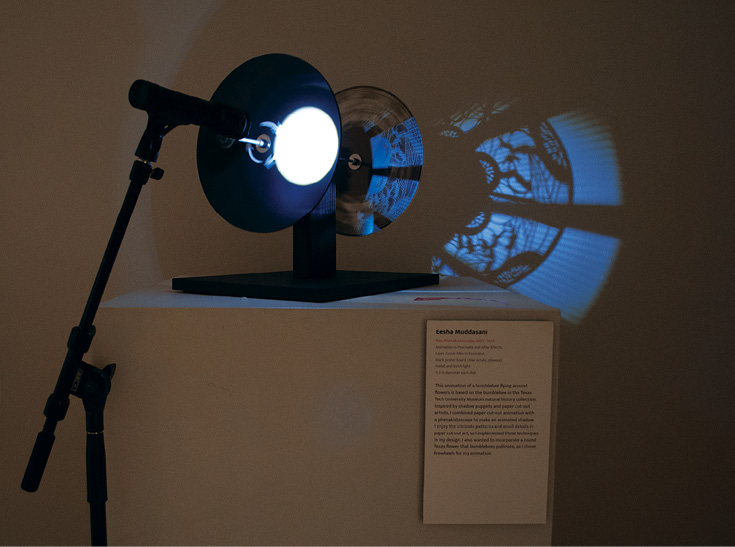My work is a dual-disk phenakistiscope depicting a bumblebee flying around flowers, and it’s based on the bumblebee in the natural history collection of the Museum of Texas Tech University. Inspired by shadow puppets and paper cut-out artists, I decided to implement paper cut-out techniques in a phenakistiscope to create an animated shadow. I struggled to find examples of this concept, but I was able to use my knowledge of phenakistiscopes to come up with a plan and create a small proof of concept using what I had (a granola bar box, a straw, and some aluminum wire).
Though this small test worked well, I ran into more issues when testing the final device. There was quite a bit of trial and error for the light source, the distance between the disks, the size of the slits, the distance from the wall, etc. since many factors affect the quality of the shadow animation. Despite all the problems that arose, I’m still amazed that it’s possible to watch a shadow come to life.
I have always considered animation as art. For me, art as a category is broad and encompasses many different things embracing the joy and practice of creation.
When working on an animation, I generally research the subject matter and similar projects, ideate designs and movements, and then animate. I like to use the material as inspiration for the style and techniques in my animation.My process, specifically while animating, changes depending on what kind of animation I am doing or on my familiarity with it.




